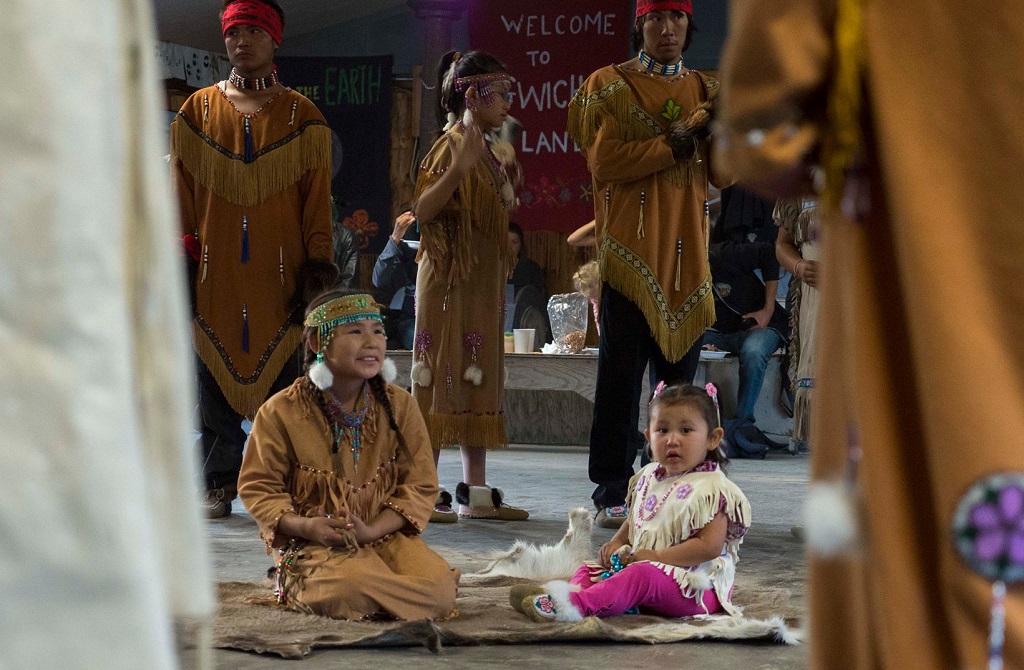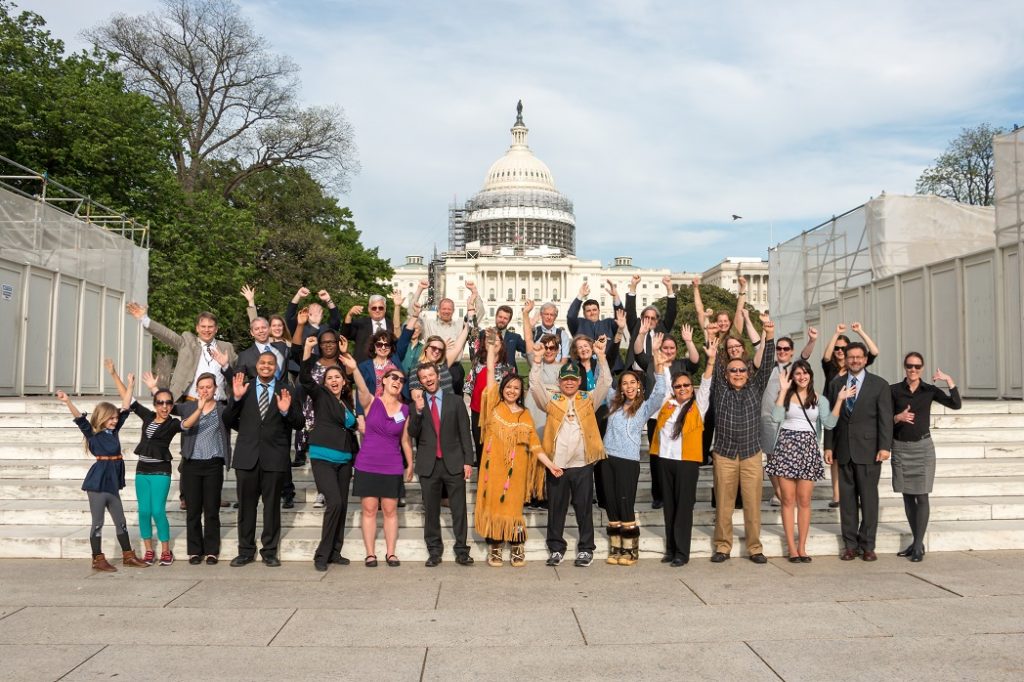The History Of The Gwich’in Gathering

In June of 1988, the elders and traditional leaders of the Gwich’in Athabascans congregated for the first customary gathering of their Nation in more than a century. July 26th will mark the first day of the 15th biennial Gwich’in Gathering, this year in Arctic Village.
Today, approximately nine thousand Gwich’in people live in fifteen small villages scattered across the northernmost parts of Alaska and Canada, making their home on or near the migratory route of the Porcupine Caribou Herd. In accordance with tradition, when the first Gathering was held in 1988 a talking stick was used, and those in attendance unanimously decided to speak with one voice against oil and gas development in the birthing and nursing grounds of the Porcupine Caribou Herd.
A caribou in Alaska. Photo: Alaska Wilderness League.
Out of this meeting, the Gwich’in Steering Committee was formed and the groundwork was laid for the now three-decade-long fight to protect the Coastal Plain of the Arctic National Wildlife Refuge. The Gwich’in come together every two years, rotating villages, to reaffirm their commitment to their position though a formal resolution.
July 26th will mark the first day of the 15th biennial Gwich’in Gathering. This year’s gathering, located in Arctic Village, Alaska, will focus on “celebrat[ing] and thank[ing] President Obama for sending the first-ever proposed Arctic Refuge Wilderness recommendation to Congress,” and marks “the key time to move permanent protection – Wilderness – forward.”
The Arctic National Wildlife Refuge is deeply important to the Gwich’in way of life. Known in Gwich’in as “Iizhik Gwats’an Gwandaii Goodlit” – the Sacred Place Where Life Begins – the Coastal Plain of the Arctic Refuge acts as the calving grounds for the Porcupine Caribou Herd, a source of primary sustenance for the Gwich’in. The Gwich’in people are “people of the land,” and as residents of a region extending from northeast Alaska to the northern Yukon and Northwestern Territories of Canada for more than 20,000 years, it is safe to say that their knowledge of and connection to the Refuge is strong.
Since the first Gwich’in Gathering, the Gwich’in have testified multiple times before Congress, the United Nations, and at other public hearings in support of protecting the Arctic Refuge and its Coastal Plain.
Participants at Alaska Wilderness League’s 2016 Wilderness Week. Photo: Alaska Wilderness League.
But the Gathering isn’t just about protecting a place, but also preserving a culture and the traditions that go with it. It is a time for family and friends to come together, and to reinforce the idea that the Gwich’in and the Refuge are inextricably entwined – making protecting the Refuge not only an environmental issue, but one that is also very much a human rights issue.



